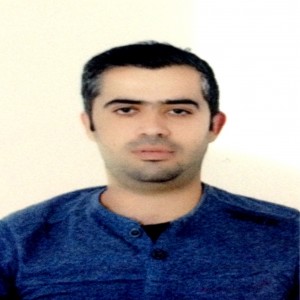المؤتمرات العلمية
2019
EFFECT OF DIFFERENT STOCKING DENSITIES ON COMMON CARP (CYPRINUS CARPIO) BEHAVIOUR IN DUHOK-KURDISTAN REGION OF IRAQ
2019-11
1st international agr sciences conference
This study was designed to elucidate the effect of three stocking densities on Common carp welfare using their behaviour. Three concrete ponds were used (Control, LowSD and HighSD). Number of fishes per pond were 8, 4 and 12 for Control, LowSD and HighSD, respectively. Fish behaviour was recorded by direct observations. Each pond was observed directly on the front of pond and daily for 6 respective days. Results revealed that there was a significant difference of time spent feeding between treatments (P < 0.01). In addition, a significant difference was found in resting time (P < 0.01) between treatments as well as there was a considerable difference of swimming time (P < 0.01) between different stocking densities. HighSD fishes spent more their time in swimming than other groups significantly (P < 0.01), and significantly less time spent resting (P < 0.01). The higher stocking density had significantly (P < 0.01) more air breathing than other stocking densities. All aggressive behaviours were found to be significantly more in HighSD; bites and attacks (P < 0.05), and threatening and submission (P < 0.01). No concrete conclusion can be made from this work but low stocking density is not recommended.
EFFECT OF DIFFERENT STOCKING DENSITIES ON COMMON CARP (CYPRINUS CARPIO) BEHAVIOUR IN DUHOK-KURDISTAN REGION OF IRAQ
2019-10
1st international agr sciences conference
This study was designed to elucidate the effect of three stocking densities on Common carp welfare using their behaviour. Three concrete ponds were used (Control, LowSD and HighSD). Number of fishes per pond were 8, 4 and 12 for Control, LowSD and HighSD, respectively. Fish behaviour was recorded by direct observations. Each pond was observed directly on the front of pond and daily for 6 respective days. Results revealed that there was a significant difference of time spent feeding between treatments (P < 0.01). In addition, a significant difference was found in resting time (P < 0.01) between treatments as well as there was a considerable difference of swimming time (P < 0.01) between different stocking densities. HighSD fishes spent more their time in swimming than other groups significantly (P < 0.01), and significantly less time spent resting (P < 0.01). The higher stocking density had significantly (P < 0.01) more air breathing than other stocking densities. All aggressive behaviours were found to be significantly more in HighSD; bites and attacks (P < 0.05), and threatening and submission (P < 0.01). No concrete conclusion can be made from this work but low stocking density is not recommended.
2018
A Comparison of water quality between well and spring samples selected from Soran District, Northern Erbil Governorate, Kurdistan Region–Iraq
2018-12
IOP Conference Series: Materials Science and Engineering
Water samples from twenty wells and twenty springs were assessed to determine
whether samples from springs and wells have similar concentrations of selected characteristics,
including electrical conductivity (EC), total alkalinity (TA), total dissolved solids (TDS), pH,
Sulphate (SO42-) Nitrate (NO3-), total hardness (TH), magnesium (Mg2+) and Calcium (Ca2+).
Comparisons were made between concentrations of chemical and Physical characteristics in
water samples from springs and wells within the same aquifer. Samples were collected
monthly from the wells and springs during March 2017 to February 2018. The samples were
tested for chemical and Physical characteristics according to the standard methods of American
Public Health Association. There were significant differences between all data selected from
springs and wells except Mg and DO. In addition, no significant difference was found between
the mean pH values. The results indicated that the water samples lie within the permissible
limits as compared with WHO (World Health Organization) for drinking uses, however some
samples of water are without the permissible limit such as EC, TDS, and TH. The spring water
samples were found to be better than well water samples. The results showed that eight wells
and four springs’ water samples requires treatment for drinking uses.
الرجوع
